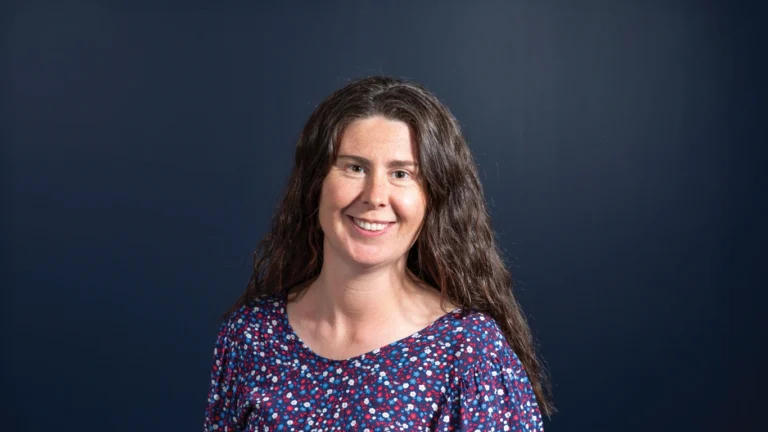
Times change, and those in leadership positions ignore the shifting societal sands at their peril. Professions such as law, finance, medicine and politics are no longer the exclusive habitat of society’s well-heeled and well-born. One’s background, gender, color and creed are not the insurmountable hindrances to career and social aspirations they once were.
But it’s early days, too soon to proclaim, “job done”. For while it’s true that advancements have been made, barriers still exist. And when it comes to the legal profession, it’s these roadblocks that Kate Tyers is working tirelessly to break down. And when she talks about social mobility, the creation of networks that deliver safe spaces for women and the scourge of imposter syndrome, she’s talking from personal experience.
Having grown up with parents who believed strongly in equality between the sexes and education as a means of developing financial self-reliance, Kate was surprised and dismayed to discover that what her family valued didn’t necessarily apply in the wider world. At university, the divide between her background, which included a state school education, and that of many of her private school-educated peers was daunting.
“There was a lack of inclusivity, I wasn’t one of them,” she says. “But having said that, in terms of career aspirations, I never felt I couldn’t do law. I never thought it was only a man’s job. To me, it was an equal job and if I wanted to do it I should.”
Kate is very aware, however, that law was, and remains, one of the more traditional professions and that the ‘tribe’, particularly among the upper echelons, consists mostly of white middle-class men. Now, with years of legal experience behind her, she’s in a position to take a stance on the inequalities within the profession and become a champion for change – lifting as she climbs.
“Diverse leadership in law firms isn’t merely an aspiration; it’s a business imperative.”
The statistics back up her assertions. According to The Solicitors Regulation Authority report on diversity published in the UK in July 2024, 53 percent of lawyers across England and Wales are women, 19 percent of lawyers represent Black, Asian and minority ethnic groups, and six percent of lawyers are disabled (compared to 16 percent in the general workforce). The report also notes that “women are underrepresented at partner level in firms of all sizes, but to a greater extent in the largest law firms (34 percent of partners overall and 28 percent of full-equity partners)”.
Findings also indicate that “the difference in the ethnicity profile between the one-partner firms and the largest firms is still marked, with the proportion of partners from a Black, Asian and minority ethnic group more than four times greater in one-partner firms (36 percent compared to eight percent)”.
Across the Atlantic, the National Association for Law Placement (NALP) has been monitoring US law firm diversity for over 30 years. Last year it reported that “the percentage of female associates of color among all associates was 17.5 percent in 2023, up from about 11 percent from 2009 to 2012”. Commenting on the report, NALP executive director Nikia L Gray stated, “Real change is slow, hard and imperceptible, but it does happen.”
As Kate says, “We cannot afford to ignore the talent pool that women represent. It’s about time we broke down the barriers. When I started my career, there were very few female partners to look up to. Mentorship programs have been instrumental in changing that narrative.”
But achieving diversity in leadership within the profession is not just about meeting quotas, it’s about recognizing the value that diverse perspectives bring to the table. As Kate puts it, “Diversity must be woven into the fabric of our organizations, not just added as an afterthought.”
“Studies have shown that companies with gender-diverse leadership outperform their less diverse counterparts by 15 percent.”
Diverse teams bring varied perspectives, which leads to better decision-making and problem-solving. Studies have shown that companies with gender-diverse leadership outperform their less diverse counterparts by 15 percent. Innovation and client expectations are other issues that benefit from a more diverse approach. Legal challenges require innovative solutions and diverse leadership fosters creativity and unique approaches. Clients too are increasingly demanding diversity from their legal advisors, recognizing that a team comprised of members with varied backgrounds is better equipped to address complex, multifaceted issues – resulting in more nuanced and effective legal advice.
Kate says that achieving leadership diversity requires actionable steps such as mentorship programs, which are a good way to help guide junior lawyers through the ranks, flexible work arrangements (i.e. work hours and locations that can help retain top talent) and continuous training on unconscious bias, a means of fostering an inclusive work culture. Organizations should also leverage data to inform and shape their diversity initiatives. By analyzing workforce demographics, promotion rates, and employee feedback, they can gain a clearer picture of where disparities exist and how to address them. Data-driven approaches allow companies to set realistic goals and measure progress accurately, providing a solid foundation for continuous improvement.
“Lawyers as leaders play a really important part in setting an example of how best practice could be – and that has a ripple effect across their organization. If GCs are sitting on the board or are part of the exec team, they can have influence. It’s an interesting intersection – having knowledge of the law but also gaining leadership skills.”
As Kate points out, lawyers – and GCs in particular – have to think strategically. And whether they opt for a gently- gently approach or take a more disruptive line, their input into how organizations deal with the issue of diversity in the workplace can be crucial. “It takes time, all of this is a journey, and when you’re passionate about something it doesn’t feel like it’s happening fast enough. But you have to also think about how far we’ve come and where we’re going, that’s really important. It’s small changes in people’s minds that makes them realize that, okay, maybe I can talk about or think about this, and slowly it becomes ingrained in the way we do things.”
It also takes a certain amount of bravery to stick one’s head above the parapet and call out your profession, to openly challenge the status quo and to ask the hard questions. And if women want to be included in workplace conversations about leadership diversity or indeed lead the charge, many are first going to have to battle their own demons – one of the biggest being imposter syndrome (according to Personnel Today, 54 percent of women suffer with imposter syndrome compared to 38 percent of men).
Kate, who has herself battled imposter syndrome, believes it’s something that can be overcome. She advocates taking a proactive approach, starting with self-awareness and a shift in mindset. “One of the first steps is to acknowledge your achievements and own them. Reflect on your successes and remind yourself of your capabilities. It’s also helpful to seek feedback from peers and mentors who can provide a more objective view of your strengths.”
She also highlights the importance of continuous learning and growth. “Leadership is not about being perfect, it’s about being willing to learn and adapt. Embrace opportunities for professional development and don’t be afraid to step out of your comfort zone.”
Building a supportive network is another key strategy to combating imposter syndrome. Kate advises connecting with others who may be experiencing similar challenges. “Having a network of colleagues and mentors who understand your journey can provide invaluable support and encouragement. Sometimes, just knowing that others share your feelings can make a significant difference.”
“Leadership isn’t about being perfect. It’s about being willing to learn and adapt.”
And it’s important to recognize that while imposter syndrome is a formidable obstacle, by acknowledging these feelings, seeking support, and continuously striving for growth, it’s possible to overcome self-doubt and become effective leaders. “The most important thing is to believe in yourself and your abilities. Leadership is a journey, and every step you take adds to your experience and expertise.”
As she says, with leadership comes power and influence, and for those promoting diversity, it’s important to gather ideas as to what is the right fit for the organization in question, or what the roadmap for that might be. “You’ve got to work out what is important, what the ethos of your company is, and also challenge your own unconscious biases so you can be sure they don’t influence your opinions and decisions.”
It’s useful also to consider how other organizations are approaching the issue of diversity, especially those from the public sector which can sometimes be more forward thinking than the private sector. Make a concerted effort to engage with people outside of your usual orbit and don’t be shy to network. These provide opportunities to share ideas, to diversify the breadth of what DEIB can look like and scoop up ideas from disruptive places and take them back to your own business.
Achieving true leadership diversity in the legal world requires a long-term commitment and a multifaceted approach. Regularly reviewing and updating diversity policies ensures they remain effective and relevant. Organizations must be willing to adapt and evolve their strategies as new challenges and opportunities emerge. Moreover, accountability is crucial for sustaining progress. This can be achieved by setting clear, measurable goals and regularly assessing the impact of diversity initiatives.
Leaders must also be held accountable, with performance reviews incorporating diversity and inclusion metrics as a critical component of success. Such accountability sends a strong message that diversity is integral to an organization’s values and operations. It’s vital too that senior leaders lead by example. Demonstrating a personal commitment to diversity and inclusion can inspire entire organizations to follow suit.


